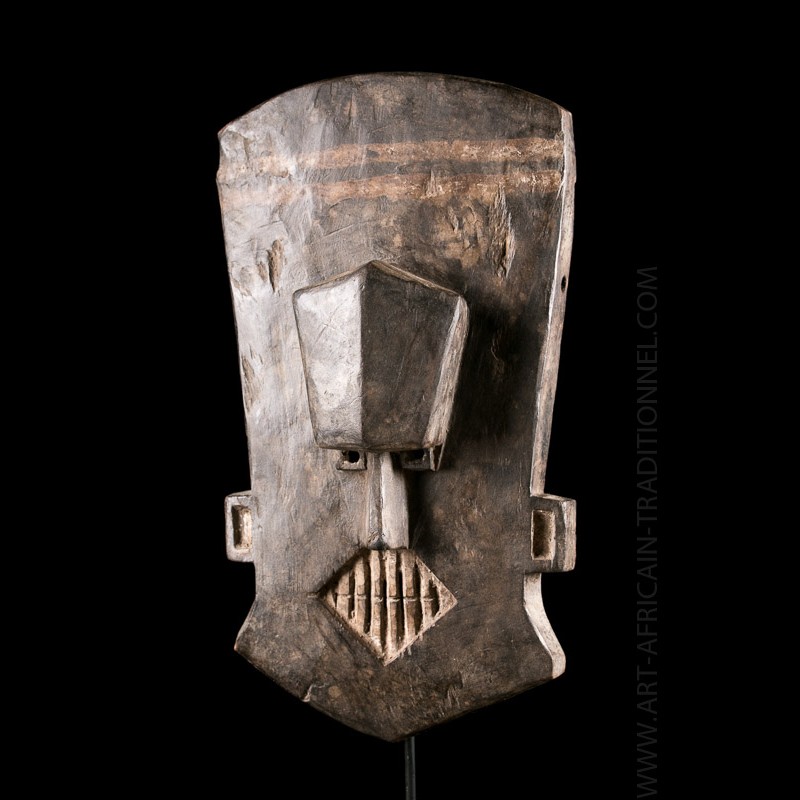





















A large wooden mask which is flat and angular in shape. To the front are carved sections to form the face. The nose is wide with a central ridge, the eyes are square, small and pierced. To the top of the nose is a crest forming the brow ridge and forehead. The mouth is angular and open to reveal rows of teeth held together in an aggressive manner. The small ears to the side are highlighted with white pigment to the centre. The angular top of the mask has two white horizontal lines running across. The surface of the mask is painted black.
Kuba, also called Bakuba, a cluster of about 16 Bantu-speaking groups in southeastern Congo, living between the Kasai and Sankuru rivers east of their confluence. They have kept aloof from modern life, and few have emigrated or engaged in European-style occupations. The groups are divided into lineages related through matrilineal descent; the lineages are segments of numerous dispersed clans. The Kuba are united in a kingdom, ruled by the central Bushongo group, which emerged about 1600 AD. The kingdom is a federation of chiefdoms, each ruled by a chief and two or three councils that represent the general population and noble clans. The ruling Bushongo chief is king by divine right. Uniting factors include bonds of common culture and group feeling, a royal army, and a common administration. Nature spirits, the spirits of dead kings, and witchcraft dominate Kuba religion. Nearly all objects of daily use are decorated, and carved wooden figurines, initiation masks, cups, and beautifully embroidered hand woven raffia cloth are especially prized.
Data sheet
You might also like

A large wooden mask which is flat and angular in shape. To the front are carved sections to form the face. The nose is wide with a central ridge, the eyes are square, small and pierced. To the top of the nose is a crest forming the brow ridge and forehead. The mouth is angular and open to reveal rows of teeth held together in an aggressive manner. The small ears to the side are highlighted with white pigment to the centre. The angular top of the mask has two white horizontal lines running across. The surface of the mask is painted black.
Kuba, also called Bakuba, a cluster of about 16 Bantu-speaking groups in southeastern Congo, living between the Kasai and Sankuru rivers east of their confluence. They have kept aloof from modern life, and few have emigrated or engaged in European-style occupations. The groups are divided into lineages related through matrilineal descent; the lineages are segments of numerous dispersed clans. The Kuba are united in a kingdom, ruled by the central Bushongo group, which emerged about 1600 AD. The kingdom is a federation of chiefdoms, each ruled by a chief and two or three councils that represent the general population and noble clans. The ruling Bushongo chief is king by divine right. Uniting factors include bonds of common culture and group feeling, a royal army, and a common administration. Nature spirits, the spirits of dead kings, and witchcraft dominate Kuba religion. Nearly all objects of daily use are decorated, and carved wooden figurines, initiation masks, cups, and beautifully embroidered hand woven raffia cloth are especially prized.
